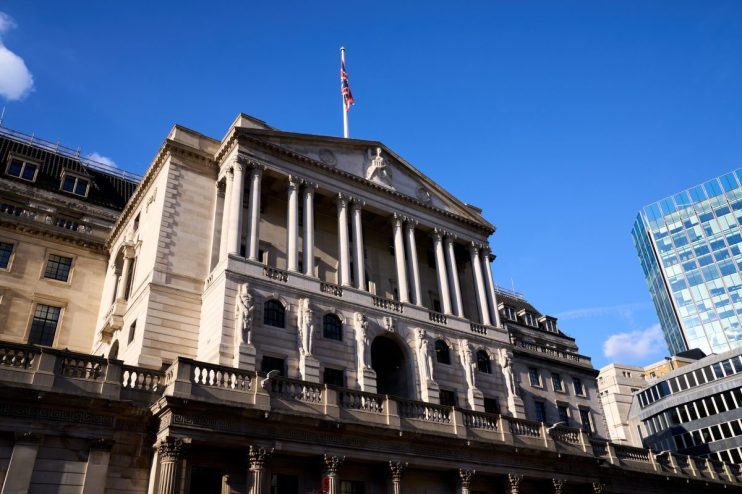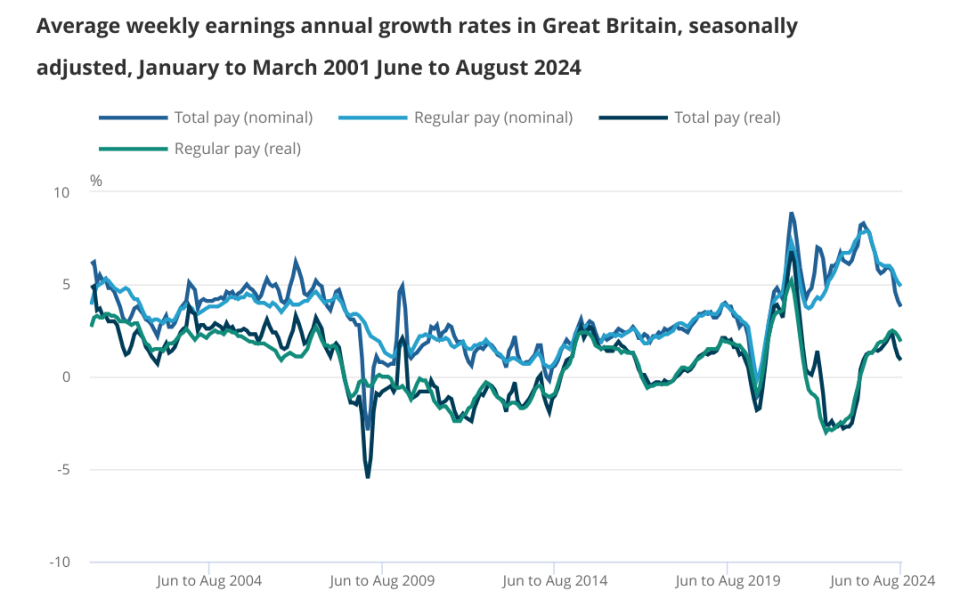Wage growth eases again in boost for rate cut hopes

Wage growth eased in line with expectations, new figures show, helping to pave the way for further interest rate cuts this year.
According to the Office for National Statistics (ONS), pay growth excluding bonuses eased to 4.9 per cent in the three months to August, down from 5.1 per cent previously.
This was in line with expectations and the slowest rate of pay growth since June 2022.
Including bonuses, annual wage growth fell to 3.8 per cent, down from 4.0 per cent and slightly ahead of the 3.7 per cent expected by economists.
David Freeman, head of the ONS labour market and household division, said: “Pay growth slowed again, with last year’s one-off payments made to many public sector workers continuing to affect the figures for total pay.”

Rob Wood, chief UK economist at Pantheon Macroeconomics, said “slowing wages make a November rate cut a slam dunk”.
Although pay growth fell, wages are still rising faster than inflation. Workers saw real pay growth of 1.9 per cent in the three months to August, down from 2.2 per cent last month.
Unemployment, meanwhile, fell to 4.0 per cent whereas economists had predicted it would remain at 4.1 per cent.
This suggests the labour market remains tight, although there is a lot of uncertainty about the figures as the ONS revamps its data collection.
“We would advise caution when interpreting changes in these data while we continue to improve survey responses,” Freeman said.
Other indicators suggested that the labour market continued to cool.
The number of vacancies decreased by 34,000 in the three months to September while the number of payrolled employees fell by 15,000, which was greater than the 3,000 fall expected by economists.
“Today’s data will reassure the Bank of England that the risk of wage growth remaining persistent is receding,” Yael Selfin, chief economist at KPMG UK said.
“With the economy set to slow in the coming months, this is likely to add further downward pressure on labour market activity.”
Strong wage growth has been a concern for policymakers at the Bank of England due to fears that it could keep cost pressures elevated, particularly in the labour-intensive services sector.
Larger pay packets also mean consumers have more disposable income, enabling them to spend more on goods and services.
But pay growth has eased from peaks of around eight per cent last summer, suggesting that the Bank’s aggressive rate hikes have successfully contained inflationary pressures.
The Bank cut interest rates for the first time since the pandemic in August and markets think there is a fairly good chance that the Bank will cut rates twice more this year.
Governor Andrew Bailey has suggested that the Bank might be “a bit more activist” on rates in the coming months, if there are further signs of progress on inflation.
However, Huw Pill, the Bank’s chief economist, is still concerned about the potential persistence of inflation, suggesting there is “ample reason for caution” on rates.
Inflation figures for September will be published tomorrow.